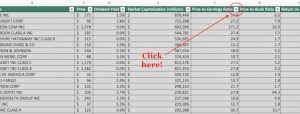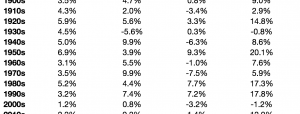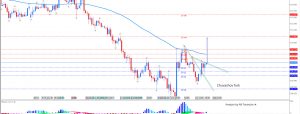
Glad you could join us for this week’s Market Outlook. Hope you enjoyed a profitable week of investing and trading in the positive market.

The Federal Reserve kept interest rates on hold.After the Federal Reserve finished meeting for two days earlier last week, Chairman Powell announced that they would hold interest rates steady. More importantly, he announced that the Fed remained cautiously optimistic that inflation is trending down as they stuck to the path for interest rate cuts to come later in the year. The Chairman conveyed that price pressure will continue to ease, and it will likely be appropriate to start cutting later in 2024.By a small majority, Federal Reserve committee members stuck to the expectation of three cuts for the remainder of the year. Powell also indicated that slowing the pace of the reduction to the Fed’s bond holdings will come into view “fairly soon.” Is this a change in posture?No, but it does show that the Federal Reserve is likely willing to accept higher inflation than their long-held objective of getting inflation down to 2% for their long-term objective. See the dot pattern below indicating 3 rate cuts during 2024: One problem area of inflation is housing.Housing costs remain a lingering inflationary concern and have challenged the Federal Reserve’s effort to curb rising prices. Fortunately, rents have shown signs of cooling, but we don’t think a steady downward trend has fully materialized yet.Housing costs are an essential part of the economic backdrop. Higher market rents erode consumer spending and have a negative impact on discretionary spending including retail sales, which remains a significant part of the economic engine.Chairman Powell expressed confidence that lower market rents would eventually translate into lower housing inflation. He did acknowledge uncertainty about the timing of this impact. He also stressed that any decision the Fed might make will be data dependent. We are of the opinion that this data point may cause additional complications for the Fed’s action to lower rates. We see these rate cuts potentially being pushed out further in the year and then being construed as a political, more than economic move.See the most recent PCE (Personal Consumption Expenditure) chart below, which includes housing but not food and energy:
One problem area of inflation is housing.Housing costs remain a lingering inflationary concern and have challenged the Federal Reserve’s effort to curb rising prices. Fortunately, rents have shown signs of cooling, but we don’t think a steady downward trend has fully materialized yet.Housing costs are an essential part of the economic backdrop. Higher market rents erode consumer spending and have a negative impact on discretionary spending including retail sales, which remains a significant part of the economic engine.Chairman Powell expressed confidence that lower market rents would eventually translate into lower housing inflation. He did acknowledge uncertainty about the timing of this impact. He also stressed that any decision the Fed might make will be data dependent. We are of the opinion that this data point may cause additional complications for the Fed’s action to lower rates. We see these rate cuts potentially being pushed out further in the year and then being construed as a political, more than economic move.See the most recent PCE (Personal Consumption Expenditure) chart below, which includes housing but not food and energy: Why would the Fed cut their overnight lending rate then?There are several important reasons that the Fed is willing to stay on track to reduce the Fed Funds rates from its current 5.25% – 5.50% to a target (based on the dot pattern) of 3 cuts down to 4.50% – 4.25%? Even without a significant reduction below the current annualized rate of inflation of 3% or better, the Fed is inclined to reduce rates and probably sooner due to the following reasons:
Why would the Fed cut their overnight lending rate then?There are several important reasons that the Fed is willing to stay on track to reduce the Fed Funds rates from its current 5.25% – 5.50% to a target (based on the dot pattern) of 3 cuts down to 4.50% – 4.25%? Even without a significant reduction below the current annualized rate of inflation of 3% or better, the Fed is inclined to reduce rates and probably sooner due to the following reasons:
A big week for Central Banks around the world.Many countries around the world also held central bank meetings over the last few weeks signaling their future plans on their monetary policy.The Swiss National Bank, citing progress on inflation, became the first among global peers to cut interest rates. Norway signaled no such move to lower rates for at least another 6 months. As was expected, The Bank of Japan finally ended its negative interest rate regime (-0.25%) and raised rates to 0%. This was a long time coming and a good sign that economic conditions have finally picked up in Japan.In Africa, central banks in the continent’s biggest economies, including Egypt and Kenya, all maintained tight monetary policies to contend with lingering and sticky inflation.Several other developed nations signaled optimism that their rate cuts were still on the table for later this year, similar to the United States stance. The Fed’s Projections.As referenced above, much of the Fed’s motivation for reducing the Fed Funds was that inflation would decline and economic conditions soften. Their longer-term expectations were evident in the data that they put forth this past week. See table below: As mentioned above, it certainly seems that Powell & Company are willing to accept higher inflation (as referenced in the chart above) than previous targets.Our take: Both Mish and I have been suggesting that inflation wouldn’t come down so quickly. While we both saw it trending down, we were not surprised that it started to pick up again in January and February when it unexpectedly came in “hotter” than expected. Right now, we are having a hard time buying the idea that inflation gets to 2.4% with economic conditions as good as they currently are. Not everyone is happy with possible rate cuts.We have maintained “higher for longer” and will continue with this narrative. Additionally, we are not surprised that some economists have NOT agreed with Chairman Powell’s assessment that rates should be reduced. Former Treasury Secretary Lawrence Summers this week accused the Fed of having “itchy fingers” on rate cuts in the face of a stronger economy.In summary: We would NOT be surprised if the Fed went to 1 or 2 rate cuts and that they could be put off by a month or two than is currently expected. Continued Concern:For over a year we have laid out the lingering concerns from some economists that we are headed for a recession. This has not materialized (yet), even though we have had the longest running inversion between 2-year and 10-year Treasuries. In the past, this type of inversion has forecasted an oncoming recession. There are still plenty of market commentators who continue to stick with the recession narrative. See chart below:
As mentioned above, it certainly seems that Powell & Company are willing to accept higher inflation (as referenced in the chart above) than previous targets.Our take: Both Mish and I have been suggesting that inflation wouldn’t come down so quickly. While we both saw it trending down, we were not surprised that it started to pick up again in January and February when it unexpectedly came in “hotter” than expected. Right now, we are having a hard time buying the idea that inflation gets to 2.4% with economic conditions as good as they currently are. Not everyone is happy with possible rate cuts.We have maintained “higher for longer” and will continue with this narrative. Additionally, we are not surprised that some economists have NOT agreed with Chairman Powell’s assessment that rates should be reduced. Former Treasury Secretary Lawrence Summers this week accused the Fed of having “itchy fingers” on rate cuts in the face of a stronger economy.In summary: We would NOT be surprised if the Fed went to 1 or 2 rate cuts and that they could be put off by a month or two than is currently expected. Continued Concern:For over a year we have laid out the lingering concerns from some economists that we are headed for a recession. This has not materialized (yet), even though we have had the longest running inversion between 2-year and 10-year Treasuries. In the past, this type of inversion has forecasted an oncoming recession. There are still plenty of market commentators who continue to stick with the recession narrative. See chart below: We have no idea if a recession in 2024 will ever materialize. However, we remind you that in the past the Federal Reserve has cut rates more often from weak economic conditions. These were typically the result of slow or no growth or an economic contraction that was facing a recession.Does the Federal Reserve know something that they are not telling us? The Stock Market Surge.Given the positive news from the Federal Reserve and no pushback from Chairman Powell, even with the recent climb higher from the CPI, PPI, and the PCE, Wall Street surged based on potential future rate cuts. Why?Lowering interest rates provides less drag on companies and investors as financing rates decline. Long-term investors adjust their future cash flow rates to evaluate possible stock targets. Additionally, earnings can begin to re-accelerate as consumers feel the “ease” from lower interest rates. Calculations on stock multiples can expand as the looser financial conditions take over.Investors and traders celebrated the news of these possible rate cuts and the S&P 500 closed above 5200. This marked the 20th new high for the year on Thursday.The MSCI global gauge of shares also climbed more than 2% for this past week while the S&P 500 closed up 2.3% for the week, putting in its best week since December.According to Eric Sterner at Apollon Wealth, “The Goldilocks narrative is still very much in play with the Fed sticking to its projection for cuts while also raising economic growth forecasts.”Not only did the S&P 500 establish a new high but stock markets around the world, including Japan, Hong Kong and across Europe closed on new highs as the global stock market rally (bull market) continues.Could the Federal Reserve cut rates with the S&P at new fresh highs? (it has happened more often than you might think-see chart below) The Bull Market is Making History: 5 months, 28% and $10 Trillion.
We have no idea if a recession in 2024 will ever materialize. However, we remind you that in the past the Federal Reserve has cut rates more often from weak economic conditions. These were typically the result of slow or no growth or an economic contraction that was facing a recession.Does the Federal Reserve know something that they are not telling us? The Stock Market Surge.Given the positive news from the Federal Reserve and no pushback from Chairman Powell, even with the recent climb higher from the CPI, PPI, and the PCE, Wall Street surged based on potential future rate cuts. Why?Lowering interest rates provides less drag on companies and investors as financing rates decline. Long-term investors adjust their future cash flow rates to evaluate possible stock targets. Additionally, earnings can begin to re-accelerate as consumers feel the “ease” from lower interest rates. Calculations on stock multiples can expand as the looser financial conditions take over.Investors and traders celebrated the news of these possible rate cuts and the S&P 500 closed above 5200. This marked the 20th new high for the year on Thursday.The MSCI global gauge of shares also climbed more than 2% for this past week while the S&P 500 closed up 2.3% for the week, putting in its best week since December.According to Eric Sterner at Apollon Wealth, “The Goldilocks narrative is still very much in play with the Fed sticking to its projection for cuts while also raising economic growth forecasts.”Not only did the S&P 500 establish a new high but stock markets around the world, including Japan, Hong Kong and across Europe closed on new highs as the global stock market rally (bull market) continues.Could the Federal Reserve cut rates with the S&P at new fresh highs? (it has happened more often than you might think-see chart below) The Bull Market is Making History: 5 months, 28% and $10 Trillion. Since October 27, 2023, the S&P 500 (and other market indices such as the NASDAQ 100) has been surging. It is close to the 5-month mark now and has appreciated 28% and added $10 trillion in market capitalization. How High Can the S&P 500 Go? (see chart below):
Since October 27, 2023, the S&P 500 (and other market indices such as the NASDAQ 100) has been surging. It is close to the 5-month mark now and has appreciated 28% and added $10 trillion in market capitalization. How High Can the S&P 500 Go? (see chart below):
 The S&P 500 closed at a record high on Thursday for the third day in a row and had the best week since December. Similar momentum thrusts have led to further gains. See chart below:
The S&P 500 closed at a record high on Thursday for the third day in a row and had the best week since December. Similar momentum thrusts have led to further gains. See chart below: Last week’s winners and losers.Below is a chart indicating some of the biggest winners and a few losers (there weren’t many) from last week:
Last week’s winners and losers.Below is a chart indicating some of the biggest winners and a few losers (there weren’t many) from last week: Technology (especially semiconductor and AI related companies) and homebuilder stocks have been the leaders over the past 6 months. Here are a couple of charts showing just how positive these areas of the market have been. In fact, the NASDAQ has had such a long winning streak, there has not been a 2% down day in over 100 trading days and its longest winning streak since the great financial crisis of 2008-2009.
Technology (especially semiconductor and AI related companies) and homebuilder stocks have been the leaders over the past 6 months. Here are a couple of charts showing just how positive these areas of the market have been. In fact, the NASDAQ has had such a long winning streak, there has not been a 2% down day in over 100 trading days and its longest winning streak since the great financial crisis of 2008-2009.
 I point these two areas out specifically because our GEMS, ETF Sector Plus, Large Cap Leaders and Small & Midcap Earnings Growth strategies have all benefited by being early into technology and homebuilding stocks. Earnings Continue Driving Prices Higher.With or without the perception that the Fed will soon lower interest rates, the market is also being driven by good positive earnings growth.We are just finishing up the 4th quarter of 2023 earnings season. This was the second consecutive quarter of earnings growth. So Q3 of 2023 officially halted the earnings recession. Total S&P 500 earnings for Q4 are expected to be up 6.5% from the same period in the prior year on 3.8% higher revenues. This is the best earnings growth rate since the 2nd quarter of 2022.Looking at the full-year picture, total S&P 500 earnings are expected to increase 8.7% on 2.9% higher revenues in 2024. The takeaway here is that the earnings recession is in the rearview mirror, and markets are expecting a return to growth in the months and years ahead. This is according to Zack’s Research. See chart below:
I point these two areas out specifically because our GEMS, ETF Sector Plus, Large Cap Leaders and Small & Midcap Earnings Growth strategies have all benefited by being early into technology and homebuilding stocks. Earnings Continue Driving Prices Higher.With or without the perception that the Fed will soon lower interest rates, the market is also being driven by good positive earnings growth.We are just finishing up the 4th quarter of 2023 earnings season. This was the second consecutive quarter of earnings growth. So Q3 of 2023 officially halted the earnings recession. Total S&P 500 earnings for Q4 are expected to be up 6.5% from the same period in the prior year on 3.8% higher revenues. This is the best earnings growth rate since the 2nd quarter of 2022.Looking at the full-year picture, total S&P 500 earnings are expected to increase 8.7% on 2.9% higher revenues in 2024. The takeaway here is that the earnings recession is in the rearview mirror, and markets are expecting a return to growth in the months and years ahead. This is according to Zack’s Research. See chart below: When do we get a pause?Some analysts have been calling for a “pause” in a sideways consolidation or even a correction to digest the gains established over the past 5 months. Not sure that is going to happen as most of the market’s indicators are showing confirmation of the uptrend and not clear divergences which would make investors nervous.
When do we get a pause?Some analysts have been calling for a “pause” in a sideways consolidation or even a correction to digest the gains established over the past 5 months. Not sure that is going to happen as most of the market’s indicators are showing confirmation of the uptrend and not clear divergences which would make investors nervous. For example, based on new highs and the expanding breadth of stocks in the S&P 500 that are above their 50- and 200-day moving averages, the markets are on very positive footing. See below:
For example, based on new highs and the expanding breadth of stocks in the S&P 500 that are above their 50- and 200-day moving averages, the markets are on very positive footing. See below:
 Given how far markets have come in 5 months, should investors feel comfortable putting new $ to work?This is the biggest question I hear now. Also, investor sentiment readings are back towards the highest levels not seen for a long time. See chart below:
Given how far markets have come in 5 months, should investors feel comfortable putting new $ to work?This is the biggest question I hear now. Also, investor sentiment readings are back towards the highest levels not seen for a long time. See chart below: It is estimated that the average 401k plan has increased by more than $10,000 since the beginning of the year. Investors, big and small, are feeling the “wealth effect” from seeing their balances increase over the past 5 months.Therefore, should investors be cautious about putting new $ to work?Two charts say NO!!!.The first shows what happens after the one year start of a new bull market. If the current bull market started in November 2022 and we keep hitting new highs, look to the chart below as an indicator of where we could be headed. History shows us that buying after a new high can be very lucrative.
It is estimated that the average 401k plan has increased by more than $10,000 since the beginning of the year. Investors, big and small, are feeling the “wealth effect” from seeing their balances increase over the past 5 months.Therefore, should investors be cautious about putting new $ to work?Two charts say NO!!!.The first shows what happens after the one year start of a new bull market. If the current bull market started in November 2022 and we keep hitting new highs, look to the chart below as an indicator of where we could be headed. History shows us that buying after a new high can be very lucrative. Additionally, it is important to remember that we are in an election year. We have previously shown charts that reinforce the fact that the 4th year in an election cycle tends to be positive and that when an incumbent President is running, the market produces even better returns. The chart below reinforces the pattern we have seen with a weak midterm year (2022) followed by fresh new highs. You will note that this pattern has a track record of producing a positive return 100% of the time.
Additionally, it is important to remember that we are in an election year. We have previously shown charts that reinforce the fact that the 4th year in an election cycle tends to be positive and that when an incumbent President is running, the market produces even better returns. The chart below reinforces the pattern we have seen with a weak midterm year (2022) followed by fresh new highs. You will note that this pattern has a track record of producing a positive return 100% of the time. Thanks for reading. I hope that our commentary, along with the charts presented, might reinforce the positive aspects of the kind of market we are now experiencing.More By This Author:Bonds Like Fed FOMC Days, But The Joy Fades Quickly
Thanks for reading. I hope that our commentary, along with the charts presented, might reinforce the positive aspects of the kind of market we are now experiencing.More By This Author:Bonds Like Fed FOMC Days, But The Joy Fades Quickly
FOMC – Dovish Or Hawkish Or A Bit Of Both?
Ahead Of The Fed – Eyes On Long Bonds TLT
















